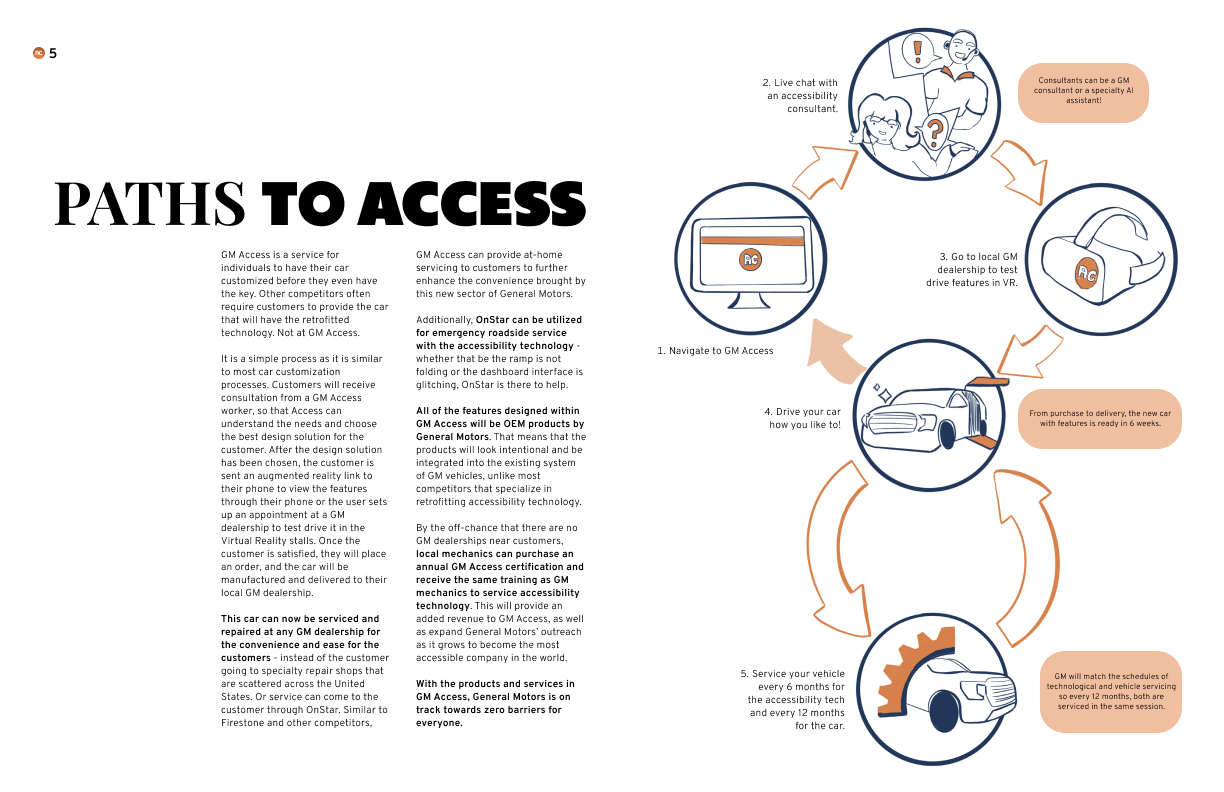
In partnership with General Motors. Teamed with Hayden Battaglia, Spencer Goetz, and Dayani Harapanahalli
HOW CAN WE DESIGN A DIVISION OF GENERAL MOTORS THAT LISTENS TO THE INDIVIDUAL NEEDS OF USERS AND BRINGS EXCITEMENT INTO ACCESSIBILITY?
GM Access
Scope: Design Research in Accessibility, Service Design, Graphic Design, User Experience Research, Video Editing/Directing, Animation, Figma, Adobe Illustrator
Primary Research
Intervention with Braunability
I reached out to Ellen Braaten, a design professor who uses a wheelchair and owns a Braunability van. Braunability is a leader in accessibility technology in vehicles. But from our research, there was lots of pain points for users and little room for customization or troubleshooting. Through the ideation, Ellen became central to the development of GM Access.

After several rounds of ideating new wheelchairs, new cars, new dashboards, we came to a realization. The problem of accessibility cannot be solved with one individual product.
A SERVICE system must be DESIGNED to allow users to customize and personalize a solution to their individual conditions.
Areas of Opportunity
I hand-drew this map on Procreate to visualize where GM Access could launch trial programs. It highlights all GM dealerships in the U.S., with orange areas marking those in regions with a high percentage of disabled residents—ideal for launching an accessibility business branch.
Who would want this service?
GM Access initially targets wheelchair users and the aging population who drive their own vehicles, valuing the independence it provides for daily activities and medical appointments.
Wheelchair users often feel the world isn't designed for them. They seek normalization of disability and empowerment through design. Seniors face changing physical abilities, preferring simplicity in vehicle design with emphasis on function over form.
By looking at these two user groups, we developed the three pillars of GM Access.
In order to design a service, we needed to establish pillars for customer and General Motors success. These are the said pillars.
Make Accessibility More Accessible
Personalization is the Universal Standard
Bring Confidence to the Table
Flow of Service
This diagram illustrates GM Access' service flow and highlights its three key pillars.
Accessibility is accessible by offering services at any GM dealership and coordinating appointments for multiple services in one visit—features not available in the U.S. currently. Personalization is achieved through consultations with accessibility experts who help select the right technology, whether it's a customized steering wheel or another option. Finally, GM Access builds confidence by letting customers test custom features in VR, ensuring a good fit and an enjoyable experience.
We had the opportunity to design a case study booklet and video pitch in a symposium presentation at General Motors headquarters in Detroit, Michigan.
Here we were able to speak to design, engineering, and accessibility professionals working at General Motors.
Pictured here from left to right: Danielle Mason (myself), Dayani Harapanahalli, Spencer Goetz, and Hayden Battaglia
My Designed Spreads
<<
Video Pitch
I directed, edited, animated the logo, and created the voiceover for the pitch. Utilizing After Effects, I was able to stitch together the audio, video, and added visuals.
This pitch was inspired by existing General Motors videos that focus more on inspiring the audience rather than marketing products to them. It creates a sense of a symbiotic relationship rather than a materialistic salesperson-to-customer one.
This video was played before we presented our project to General Motors professionals.
>>














